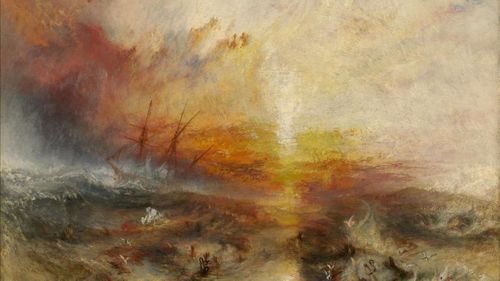A Brief Guide to Turner's 'The Slave Ship': A Masterpiece of Beauty and Horror
Mar 07, 2024 · 2 mins read
0
Share

J.M.W. Turner's "The Slave Ship" is a tempest of color and emotion, depicting the horror of the slave trade with a raw intensity that sears the conscience.
Save
Share
Inspired by a true story, the painting portrays the Zong massacre of 1781, where slaves were thrown overboard to claim insurance money. It's a chilling reminder of humanity's capacity for cruelty.
Save
Share
Turner's mastery of light and color transforms the ocean into a fiery cauldron, reflecting the violence of the act and the tumultuous emotions it evokes.
Save
Share
Amidst the chaos, the shackled hands and desperate faces of the slaves emerge, a haunting testament to their suffering and an indictment of their captors' brutality.
Save
Share
The painting's beauty lies in its ability to convey the sublime terror of nature and human inhumanity, intertwining them into a single, devastating narrative.
Save
Share
Turner, known for his landscapes, ventures into the political with "The Slave Ship," using his art as a platform for social commentary and moral outrage.
Save
Share
The vivid hues of the sunset, juxtaposed with the dark, stormy sea, create a metaphor for hope and despair, freedom and captivity, life and death.
Save
Share
Exhibited in 1840, the painting coincided with the World Anti-Slavery Convention, amplifying its impact as a rallying cry against the slave trade.
Save
Share
"The Slave Ship" challenges viewers to confront the uncomfortable truths of history, serving as a powerful reminder of art's role in bearing witness to the best and worst of humanity.
Save
Share
Today, the painting stands as a monumental work of art and a poignant memorial to the countless lives lost to the slave trade, urging us to remember and reflect on the past's enduring shadows.
Save
Share
0